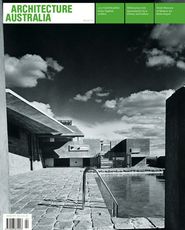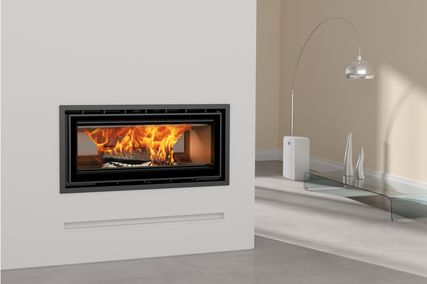Art and architecture enjoy an intimate exchange in The Schanck Show, curated by Paul Morgan at his holiday house. Reviewed by Tai Snaith.
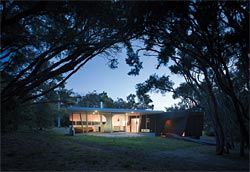
Paul Morgan’s house at Cape Schanck, site for the exhibition. Image: Peter Bennetts
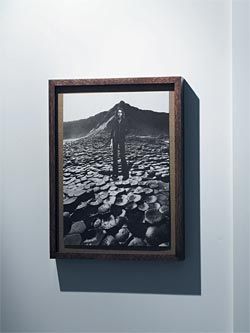
Untitled, by David Noonan. Image: Peter Bennetts
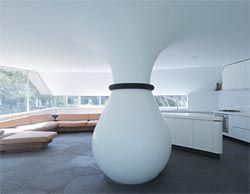
John Meade’s The Rim, encircling the internal water tank. Image: Peter Bennetts
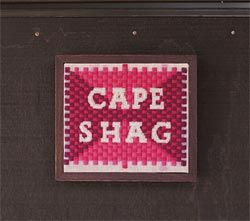
Cape Shag, by Starlie Geikie. Image: Peter Bennetts
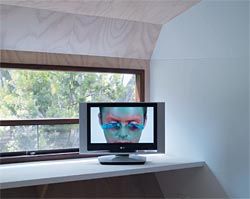
Frogman, a video installation by Cate Consandine, in the main bedroom. Image: Peter Bennetts
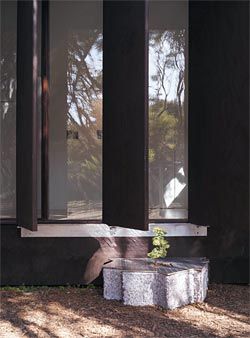
Continuous Moment, by Damiano Bertoli, the only work installed outside the house, captures the “sweet irony of the tyranny of architecture”. Image: Peter Bennetts
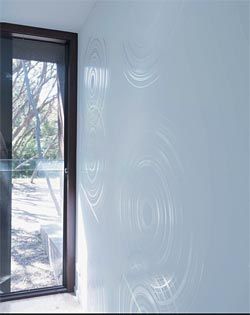
You are not alone, by Jo Scicluna – a video piece in the main space, video stills and this wallpaper installation in the front room – shares the futuristic aesthetic of the house. Image: Peter Bennetts
The ordinary experience of viewing an exhibition rarely involves dedicating a whole day, or a road trip along the coast through rolling green hills and the repeated use of a Melways. Nor does the curator and architect of the space greet you warmly at the door and lead you keenly up the ramp into his holiday home to view the show. The Schanck Show does all this, providing a rare glimpse of the process by which a personal space can inspire and complement the objects and events within.
Situated in Cape Schanck on the Mornington Peninsula, about an hour and a half south of Melbourne, Paul Morgan’s house acts as both the site and the primary subject for the work of ten Melbourne-based artists. As its name suggests, the premise of the show is very much about place. Paul’s basic request was that artists “respond to the architecture”, presenting either an appropriate pre-existing work or, in the case of many of the artists, making a work in direct response to the house or their relationship with it. Most of the furniture belonging to the house was stored away and the artworks were installed in a manner somewhere between exhibition and ornament. The house was open to the public over the course of four weekends in late 2006.
Upon entering the main living space, the visitor is bathed in light and presented with the bulbous curiosity that is the internal water tank and cooling system for the house. Ideas of play and creative thinking are immediately apparent and complemented by artist John Meade’s unequivocal intervention The Rim, taking the form of a black ring dissecting the almost pendulous architectural feature. Reminiscent of a gigantic set of steer’s testicles complete with rubber castration ring, Meade’s work articulates the essence of a successful site-specific response or collaboration, confirming the space as a kind of melting pot of function, performance, comedy and tragedy. As all good holiday houses should be.
It soon becomes clear that there is more than a superficial relationship between each artist and the space – the works have a finite sense of belonging and understanding of the place. One particular work that draws an indisputable personal link and perhaps even affected the design of the place is David Noonan’s Untitled collage on the interior hallway wall. Facing the unusually organic-shaped stone paving of the main living space, Noonan’s framed collage depicts a man walking over a dramatically cracked coastal surface, cleverly reflected in the organically hexagonal tessellated shapes of the floor.
Similarly, Starlie Geikie’s Cape Shag embroidery, at the end of the ramp entrance, registers a familiarity and humour with the visitor. This piece talks about what is rudimentary to all beach shacks of varying scale and stages of development: the “great escape”.
Cate Consandine reiterates this idea of escape, both mentally and physically, in Frogman, in the main bedroom. A large video screen depicts a male’s heavily made-up, false-eyelashed, brightly eye-shadowed, half-closing and opening eyes, facing the sole piece of furniture, the bed. The languid speed and vivid colouring of the man’s eyes slowly but surely lulls the visitor into a feeling like the moments before sleep or the ever-looping surreal events of a dream. Just as time passes at a different speed during holidays, a number of the works in The Schanck Show seem to either be made on or referencing a timelessness or “holiday mode”.
It seems that when architects consider the design of an exhibition space they often strive to create a style-neutral, predominantly blank space devoid of imposing or interrupting features. This is commonly understood to be what artists want. In the case of The Schanck Show, a one-off phenomenon, these criteria are forgotten and in most instances the artist embraces the style of the architecture wholeheartedly. A perfect example of this is the work of Jo Scicluna. Comprising a video piece in the main space, video stills and a large, vinyl, crop-circled wallpaper installation in the front room, You are not alone seems to share a futuristic, scifi- inspired aesthetic and quiet contemplation with the house itself. Directly referencing Tarkovsky’s 1972 cultclassic film Solaris, Scicluna’s work uses the symbolism of nature and light to frame her own body exploring the space surrounding the house. Her wall of crop-circle wallpaper hints at the idea of “visitors”, highlighting the recurring theme in the exhibition of visitation and experience, the personal space of the house during the exhibition and aliens visiting the earth. Most importantly, Scicluna emphasizes, as does the show itself, and the film, the importance of relationships between humans.
Perhaps the lasting impression and most exciting element of The Schanck Show is the proof that imaginative and physical space can coexist. Succinctly remembering and referencing the Continuous Monument project of Superstudio in the late 60s and 70s, Damiano Bertoli’s Continuous Moment is the only work in the show to exist outside the house. In this dinky mirrored model with tiny handmade tree atop a rough chunk of concrete, he seems to capture the same sweet irony of the tyranny of architecture – seemingly imposing structures can be the integral element in bringing like-minded people together to create their own serenity and calm.
Tai Snaith is a Melbourne-based artist and curator. She has a regular arts review on Smart Arts, Triple R radio, 102.7 FM. The Schanck Show was curated by Paul Morgan and co-curated by Mark Feary. Artists included Damiano Bertoli, Cate Consandine, Starlie Geikie, Catherine Martin, John Meade, David Noonan, Alex Pittendrigh, Peter Robertson, Jo Scicluna and Renee So.

